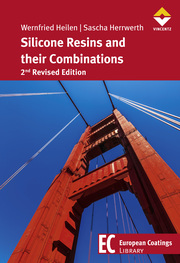Detailansicht
Epoxy Resins
Fundamentals and Applications, EUROPEAN COATINGS library
ISBN/EAN: 9783866308879
Umbreit-Nr.: 9368296
Sprache:
Englisch
Umfang: 237 S., viele chemische und mathematische Formeln,
Format in cm: 2 x 23 x 16
Einband:
gebundenes Buch
Erschienen am 21.04.2016
Auflage: 1/2016
- Zusatztext
- Aufbau, Struktur und Eigenschaften der Epoxidharze werden für lösemittelhaltige als auch für wässrige Systeme in dem neuen Fachbuch Epoxidharze dargestellt. Die 1K- und die 2K-Systeme werden beleuchtet und die lacktechnischen Grundlagen effizient hervorgehoben. Dem Leser werden unterschiedliche Anwendungsmöglichkeiten der Epoxidharzsysteme und deren Vor- und Nachteile nahegebracht. Außerdem verschafft das Buch einen Einblick in anwendungstechnische Anforderungen und deren Überprüfung.
- Kurztext
- Foreword Hardly any class of resins is more widely used in the coatings industry than that of epoxides. Therefore, anyone who works with coatings needs a good overview of this topic. This book seeks to provide that very knowledge from three aspects: First, it surveys the historical development of epoxy resins, from the first synthesis in the 19th century to the first patents for epoxide compounds in coatings to industrial scale production of resins based on bisphenol A. Chapter 1 also proposes a unique nomenclature based on DIN standards for avoiding the proliferation of terms used for epoxy resins in the coatings industry. Second, the book contains a compilation of the chemical properties of the epoxy (oxirane) group, of polymers containing epoxy groups and of polymers produced with epoxy groups (phenoxy resins). Chapter 2 presents the chemistry of the epoxy group, i.e. a characterisation of the three-membered ring, followed by the chemistry that is facilitated by this functional group and that is actually used within the industry. Finally, it examines the production and characterisation of polymers, both with and without epoxy groups, along with their curing reactions. A comprehensive overview of all the possible reactions of epoxy groups is provided, with the focus on reactions that are relevant to coatings. Modern methods of characterising the compounds, such as NMR, IR and NIR spectroscopy are explained on one hand, while all the typical key parameters used in industry and based on corresponding DIN and ISO standards are presented on the other. The third aspect is coating agents and how they are used in industry. Chapter 3 covers the general use of epoxy resins and phenoxy resins. Sections 3.2 to 3.5 discuss the state of the art regarding the use of epoxy resins in industrial areas such as corrosion protection, flooring, powder coatings, can and coil coatings, as well as offering sample coating formulations and discussing the property profiles of the resulting coating surfaces. The topic of can coatings, in particular, includes a detailed discussion of the toxicological properties and current legislation on the use of resins based on bisphenol A. Chapter 4 deals with trends in the epoxy resins market. Among the topics here are new applications, alternative compounds for BPA in food packaging, and new trends in the coatings industry. This book will serve not only as a reference book on the chemistry of epoxides and their properties, but also as a monograph on the industrial coatings applications of epoxy resins, both with and without epoxy groups. It will therefore prove useful to students, developers and industrial users alike. Düsseldorf/Germany, December 2015 Michael Dornbusch
